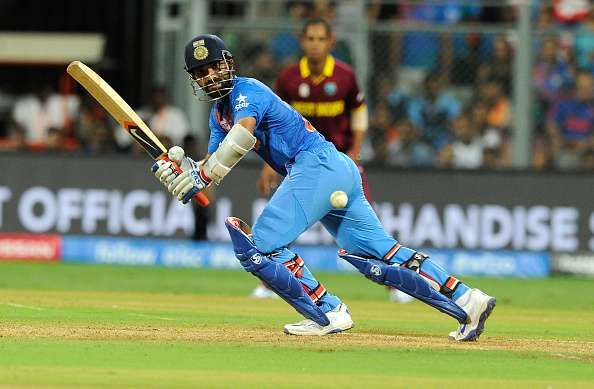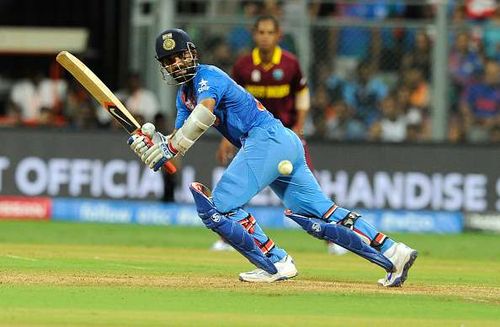
ICC T20 World Cup 2016: Ajinkya Rahane and Lendl Simmons relive history in Mumbai
The David vs Goliath parallel made sense 33 years ago. Contrary to Ian Bishop's impassioned declaration, with the final six still mid-flight, a comfortable win for West Indies in the end, was miles from an upset. Only fanatics would have taken refuge under the fallacious blanket of home advantage, considering the core of the West Indies team play far too much Indian Premier League (IPL) to feel out of place at the Wankhede stadium, especially the protagonist – Lendl Simmons, who represents Mumbai Indians.
While Mumbai's adopted son was largely responsible for thwarting India's progression from Wankhede to Eden Gardens, again, the original son of the soil, playing his first match of the tournament, may introspect and think that a strike rate of 114.28 was a tad pedestrian on that pitch. Besides discrediting a spectacular run-chase, one would have to be cold-blooded to suggest that Ajinkya Rahane's innings cost India the match. But if honesty truly is a virtue, he could have paced it better.
It was not Rahane's fault, however. India's best opening stand prior to the semi-final was 42 against Bangladesh. Shikhar Dhawan and Rohit Sharma had thus far averaged just 10.75 and 11.25, respectively. The middle order looked vulnerable under pressure. There was a nagging feeling among fans, and perhaps the Indian dressing room shared the sentiment, that the law of averages was bound to catch up with Virat Kohli. India chose to play safe, thereby, playing into the hands of West Indies.
For the majority of the innings, while runs came briskly, the rhythm was disconcertingly one-paced. It was only the final five-over surge that catapulted the score to a respectable 192. The salient feature of India's innings was how they ran the West Indies ragged and not the boundary count, on a ground where stands have a magnetic pull over the cricket ball.
The chasm between the two sides can be filled by the 54-runs that West Indies scored more, in boundaries – seven sixes and three fours. Besides, the Rahane-Kohli stand, which laid the foundation for the eventual total, fetched 66 runs in 50 deliveries, at a rate marginally slower than the opening stand itself. This plateauing of the run-rate between overs seven and fifteen was another telling factor in the end.
India could have perhaps accounted for imminent dangers, which were a line-up packed with power-hitters and recent history of the ground, rather than being restrained by psychological barriers and fear of Kohli's failure. The average score in two previous matches was 210, leaving India at least 20 short. T20 being a format of small margins, those 20-runs were always potentially critical and eventually the difference. India was never in the race for a score of 210.
In a sense, both Rahane and Simmons found themselves on the same side of a similar result, for different teams, after a gap of two years, on the same ground. The second innings followed an eerily similar pattern to the one where Mumbai bulldozed their way to 190 in a bid to qualify for the knockouts in IPL 2014.
The fall of the openers was followed by an unexpected escalation. Except back then, Simmons was dismissed early along with Michael Hussey. Except, West Indies had their full quota of 20-overs to do it in, as opposed to Mumbai's 14.4. Except the Mumbai crowd, who had once cheered for Simmons, were beaten by the same man.
